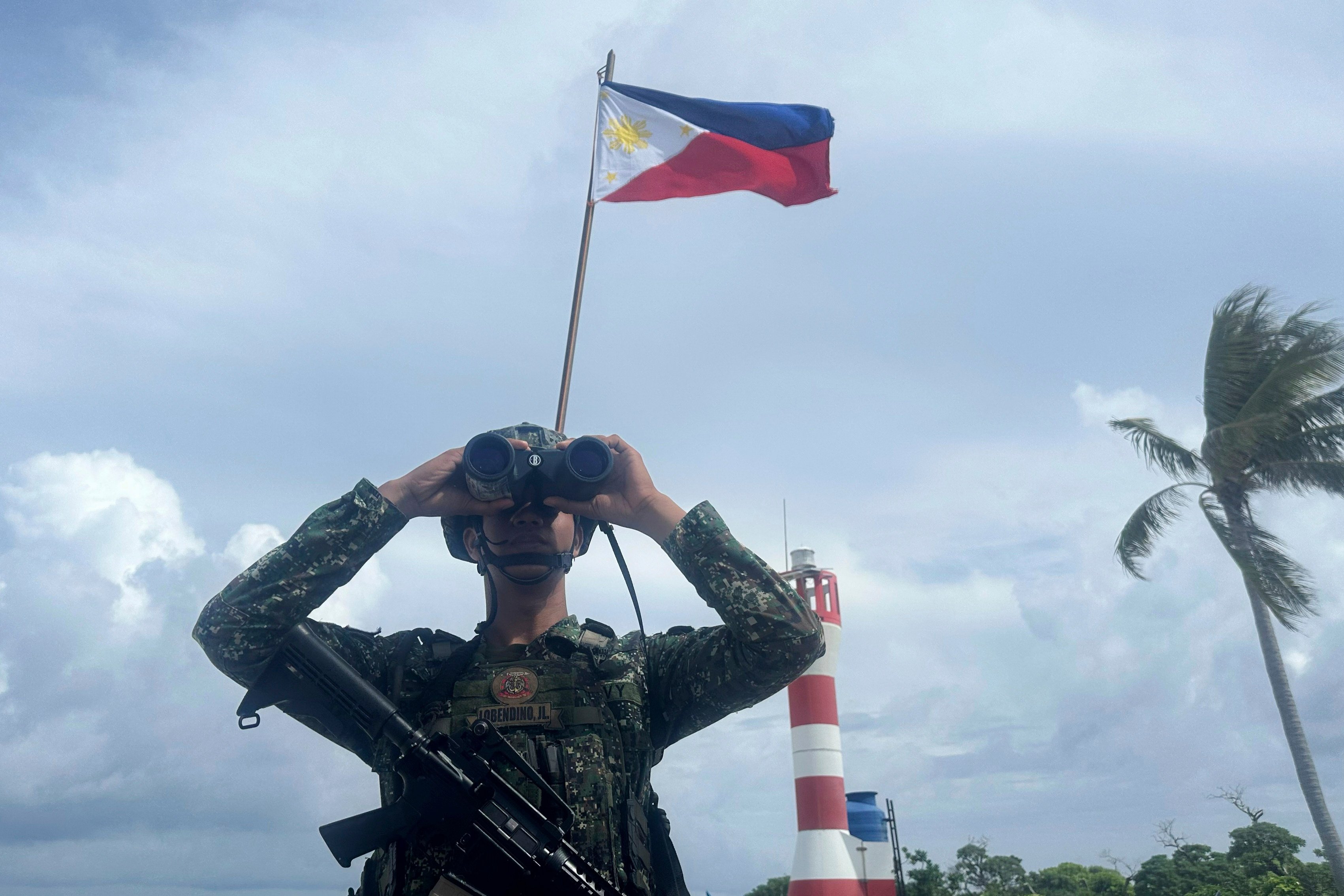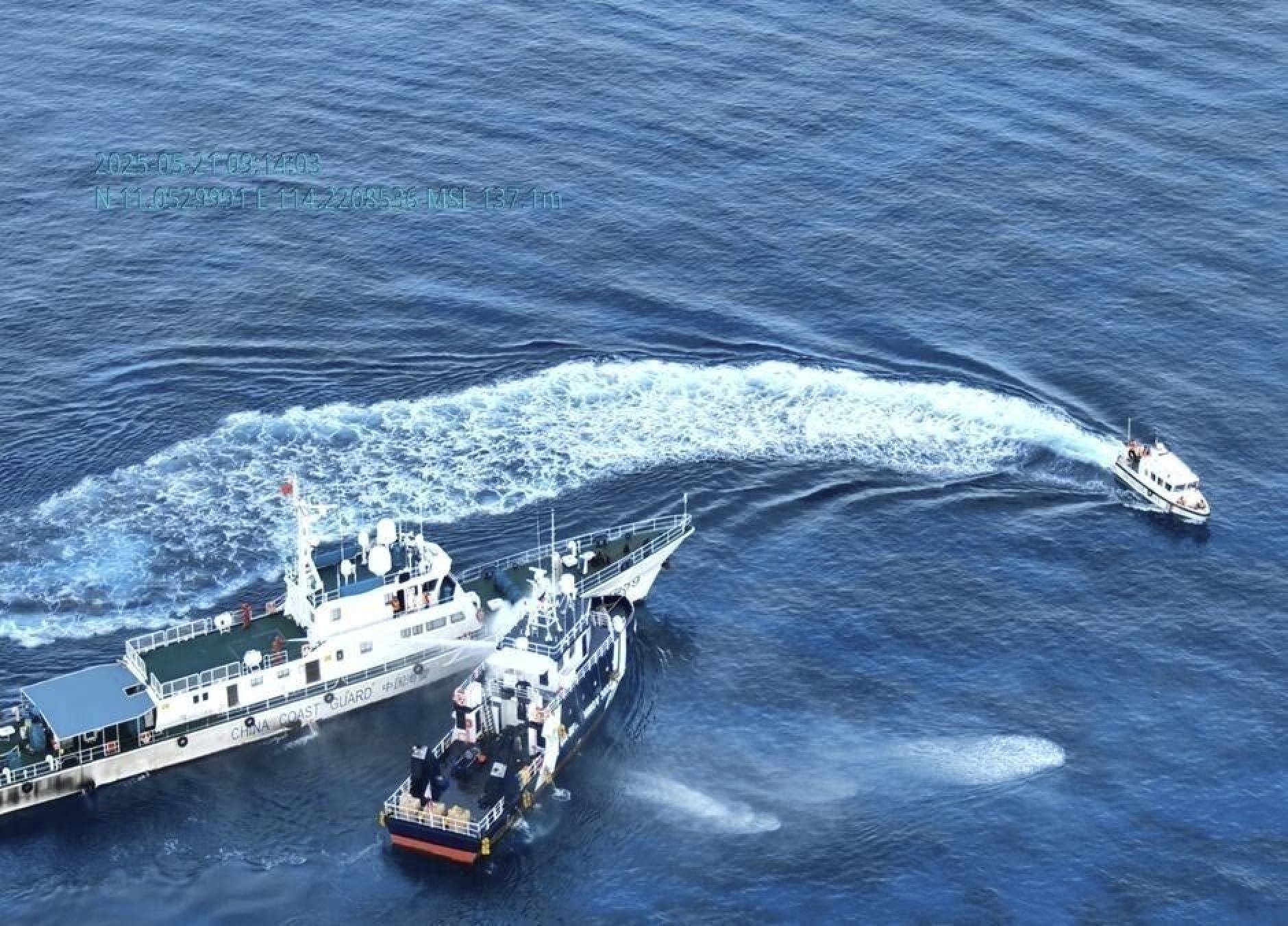‘Any time, any place’: Philippine army to be deployed to South China Sea islands
Manila aims to boost the Philippine military’s capacity to coordinate across its services and counter China’s maritime assertiveness

A senior Philippine military official has revealed a soon-to-be-deployed strategy that would involve an army contingent to support law enforcement units on occupied islands in the South China Sea.
Observers said the strategy would align with Manila’s policy shift from an internal to external defence posture aimed at protecting the country’s territorial waters. One expert, however, warned that it could lead to more aggressive moves by the Chinese navy and coastguard if Beijing were to view Manila’s plan as an escalation.
The Philippine army’s chief, Lieutenant General Roy Galido, on Tuesday told reporters that his troops were now capable of rapid deployment and could operate effectively on various terrains and under different situations.
“We’re ready. As you’ve heard and based on our exercises, the army right now is highly mobile and very agile. We can be lifted. A battalion size can always be lifted at any time and can be brought to any place in our country.”
The army, the largest branch of the Philippine military, has about 150,000 active personnel and 1.2 million reservists.
At present, only Philippine navy personnel and a few coastguard members are assigned to nine features in the Kalayaan Island group: Pag-asa Island, Parola Island, Ayungin Shoal, Lawak Island, Kota Island, Likas Island, Panata Island, Patag Island and Rizal Reef.
The Kalayaan group is located more than 450km (280 miles) west of Palawan, a province facing the South China Sea.

Asked by reporters when the deployment would commence, Galido replied it would be “soon”.
Sherwin Ona, a visiting fellow at Taiwan’s Institute for National Defence and Security Research, explained how the new strategy could potentially involve allies and the deployment of their weapons: “This will usher inclusion of various units in the Balikatan exercises. There will be access to coastal defence systems like NMESIS and Himars.”
“China will likely see this as an escalation and may respond with more aggressive maritime patrols,” Ona warned.
Colonel Louie Dema-ala, a spokesman for the army, was quoted by the Malaya Business Insight as saying that the army had no presence on the nine islands in the West Philippine Sea, Manila’s term for an area in the South China Sea that it considers within its exclusive economic zone.
Nonetheless, army personnel were helping the Philippine navy by conducting monitoring operations from their base in Palawan, a province facing the South China Sea, he said.
Chester Cabalza, president of the Manila-based think tank International Development and Security Cooperation, said allowing the army to carry out exercises in the West Philippine Sea would help the country strengthen its external security.

Praising the unity of the different services of the Philippine military, Cabalza told This Week in Asia: “The army has the largest contingent and some features in the West Philippine Sea, particularly Thitu Island, have an existing community that must be protected.”
The drills carried out by the Philippines and its allies such as the US had allowed the army to adopt the best practices in territorial defence in alignment with the Comprehensive Archipelagic Defence Concept (CADC), Cabalza said.
Adopted last year, the CADC is aimed at enhancing the capabilities of the Philippine military to help the country manage its maritime dispute with China.
“The army have also rehearsed interoperability in their tactical and strategic operations. A strong regular force should be emboldened in protecting the country’s coastal borders and exclusive economic zone,” Cabalza said.
Given the complex operational environment in the West Philippine Sea, the military must be nimble in transforming its strategies to focus more on external defence and develop new capabilities to control access and movement within specific operational areas, he added.
In October last year, the Philippine military chief, Romeo Brawner Jnr, said Manila would take more steps to bolster its maritime assets to deter China’s growing assertiveness. These include upgrading nine territorial features currently occupied by the Philippines, including installing desalination machines and communications equipment, and acquiring more ships, radars and aircraft.
His comments followed President Ferdinand Marcos Jnr’s approval in January last year of a US$35 billion budget for a revised defence programme in line with Manila’s new security policy.